PRP has quietly shifted from an insider secret to a mainstream option in Stoke-on-Trent, especially among people looking for subtle change rather than dramatic overhaul. If you have started noticing your skin looking a little more tired than you feel, or your hair not quite matching the density it once had, you are not alone. These changes arrive gradually, and often in moments you do not expect: brushing your hair and seeing more strands left behind than usual, or catching your reflection late in the afternoon and realising your under-eyes look a touch softer than they did a few years ago.
This guide breaks down the entire process, from how PRP works to what results you can reasonably expect in Stoke-on-Trent clinics. It is designed for people who want clarity rather than hype, and confidence rather than guesswork. Whether you are curious about skin rejuvenation, early hair thinning or simply exploring natural regenerative treatments, consider this your starting point.
Let’s begin with the basics of PRP treatment and how it actually works.
Find A Verified Clinic
Trusted PRP Experts, Local to You
Easily connect with qualified, verified professionals for safe, reliable treatment.

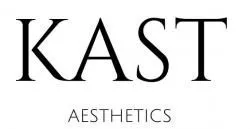
KAST Aesthetics Ltd
Brookhouse, 501 Crewe Road, Sandbach, CW11 3RX
~11.2 miles away
KAST Aesthetics Ltd Accreditations:
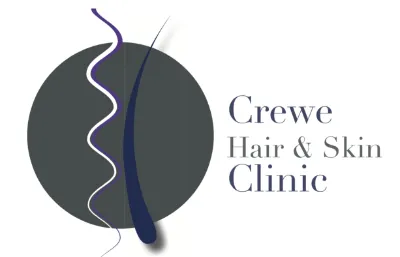
Crewe Hair and Skin Clinic
110 Nantwich Road, Crewe, CW2 6AT
~11.4 miles away
Crewe Hair and Skin Clinic Accreditations:
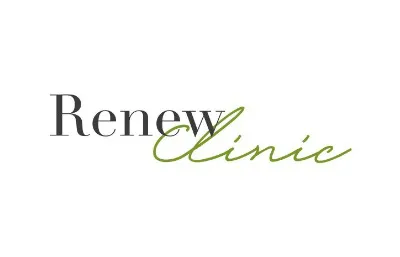
Renew Clinic
33a Hospital Street, Nantwich, CW5 5RL
~14.1 miles away
Renew Clinic Accreditations:
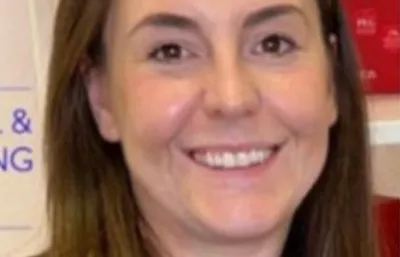
Improovu
46 Carter Street, Uttoxeter, ST14 8EU
~15.9 miles away
Improovu Accreditations:
Explore Clinics Near You on the Map
See exactly where verified PRP clinics are located across Stoke-on-Trent.
Zoom in, pan around, and click any marker to view each clinic’s profile, read reviews, and check their credentials before you book.

Your PRP Questions
Real Questions from Real People, Answered
Straightforward answers to the questions people like you are asking right now about PRP.

Cost of PRP treatment for hair?
Please give the cost and how many sessions needed to prevent complete hair loss and new hair
Hair loss.
Dear reader My name is Mo I'm interested to have prp treatment in your clinic and I have some questions How many ml of prp i will get injured ? Did you analyse prp There any other services after the treatment is done Thank you
To view all the PRP questions, please click here.
Or click here to ask your own question.
What Is PRP Treatment? (Platelet-Rich Plasma Therapy In Stoke-on-Trent)
Real regeneration using your own biology
PRP treatment in Stoke-on-Trent offers a regenerative approach to addressing skin, hair, and joint concerns, utilising a concentrated form of your own blood rather than synthetic products.

Understanding PRP therapy and why people choose it
-
PRP stands for Platelet-Rich Plasma, a portion of your blood that contains a high concentration of platelets and growth factors involved in healing.
-
During a PRP appointment in Stoke-on-Trent, a clinician takes a small blood sample, processes it in a centrifuge and isolates the golden plasma layer ready for injection or microneedling.
-
The idea is simple: platelets release natural signalling proteins that may encourage local tissue repair, support collagen production and improve circulation in the treated area.
-
Because PRP utilises your own cells, the risk of allergic reaction is very low, making it an appealing option for individuals seeking a more natural approach to aesthetics or wellness.
-
It is commonly used for early hair thinning, under-eye texture changes, fine lines, dull skin, and certain joint or tendon issues, as assessed by a specialist.
Where PRP fits in the treatment landscape
-
PRP is not a filler and does not create instant volume; instead, it may support gradual regeneration for those seeking a subtle improvement.
-
For hair loss, PRP is sometimes combined with topical treatments, such as minoxidil, for a more comprehensive approach to scalp health.
-
In joint care, PRP sits between physiotherapy and more interventional options, often recommended when conservative treatments have not been enough.
-
Many people describe PRP as a bridge between skincare and medical procedures: more targeted than home treatments but less invasive than surgery.
-
This makes PRP an appealing option in Stoke-on-Trent for adults seeking natural-looking results with minimal downtime.
What a PRP session feels like
-
The start feels familiar, like having blood taken at your GP practice, followed by a series of quick injections or microneedling passes, depending on the area.
-
Most people describe it as mildly uncomfortable rather than painful, especially with numbing cream or cooling applied beforehand.
-
After treatment, the area may feel warm or tight, a little like coming indoors after a windy walk along the canal paths near Hanley.
-
You can normally return to work or head home without needing to hide away, although scalp treatments may leave the area slightly tender to touch.
PRP therapy in Stoke-on-Trent is best understood as a regenerative treatment that aims to support the skin, hair and joints using your own biology. It offers a gentle yet scientifically grounded option for individuals seeking to enhance their appearance or comfort without relying on synthetic injectables.
How PRP Treatment Works
A simple process built on solid science
PRP treatment in Stoke-on-Trent follows a clear, medically guided procedure designed to extract and concentrate your own platelets so they can be reapplied where your skin, hair or joints need support most.

How PRP treatment supports natural repair
-
A clinician starts by drawing a small sample of blood, usually no more than you would give during a routine GP test.
-
The blood is processed in a centrifuge, a machine that spins rapidly to separate the components by density. The golden plasma layer that rises to the top is rich in platelets and growth factors, which are involved in tissue repair.
-
This concentrated PRP is then injected or used in conjunction with microneedling, depending on the target area, allowing the platelets to release signalling proteins that may support collagen production, blood flow, and local cell activity.
-
Because the platelets come from your own body, they interact naturally with the treated tissues without the risks associated with synthetic or donor-derived products.
-
Most people describe the process as logical and strangely reassuring once they have seen the plasma in the syringe, a pale gold colour that resembles the light you catch on the Trent and Mersey Canal during early autumn.
Step-by-step: what actually happens in a Stoke-on-Trent PRP session
-
Consultation and assessment
-
Your clinician reviews your medical history, examines the treatment area and confirms whether PRP is suitable for you.
-
-
Blood draw
-
A small sample is taken from your arm and immediately transferred to the centrifuge for preparation.
-
-
Centrifugation
-
The sample is spun for several minutes to separate the platelets and create the platelet-rich layer used during treatment.
-
-
Preparing the treatment area
-
Numbing cream or a cooling agent may be applied, particularly to the scalp or under-eye area.
-
-
PRP application
-
For hair loss, the PRP is injected into the scalp in small, evenly spaced points.
-
For skin rejuvenation, PRP may be delivered through fine injections or combined with microneedling for even distribution.
-
For joints, an experienced clinician injects PRP directly into the affected area, sometimes using ultrasound guidance.
-
-
Immediate recovery
-
You may feel warmth or tightness as the PRP settles, but most people return to normal activity the same day.
-
Why understanding the process matters
-
Knowing how PRP works helps set realistic expectations, especially since results develop gradually.
-
A clear, step-by-step explanation can build trust, particularly for individuals who feel nervous about blood handling or injections.
-
Understanding the process also helps you compare clinics and assess whether they adhere to medical best practices in their approach.
PRP treatment in Stoke-on-Trent is a methodical, science-based process that uses your platelets to support the body's natural repair mechanisms. Once you see how straightforward the steps are, the treatment often feels far less intimidating than expected.
PRP Treatment Options
One treatment, multiple targeted uses
PRP treatment in Stoke-on-Trent can be tailored for skin rejuvenation, hair loss, and certain joint concerns, making it a versatile option for individuals seeking natural support across various health and aesthetic concerns.
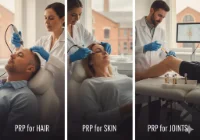
PRP for hair loss and thinning – Supporting scalp health naturally
-
PRP is injected into areas of thinning to support follicle activity and local blood supply, particularly effective in early androgenetic alopecia.
-
Many patients notice reduced shedding before improvements in density, often within the first few months of consistent treatment.
-
It is suitable for both men and women in Stoke-on-Trent experiencing gradual thinning rather than complete follicle loss.
-
PRP can be used in conjunction with medical treatments, such as minoxidil, to create a more comprehensive hair strategy.
-
Younger professionals often choose PRP because it offers a non-surgical approach that fits around busy routines without downtime.
PRP for skin rejuvenation and under-eye concerns – A subtle, regenerative option
-
PRP facials or microneedling-assisted PRP can help improve texture, tone and radiance for those wanting a natural boost rather than a filler-like effect.
-
Under the eyes, PRP may support collagen renewal, which can improve crepiness or fine lines over time.
-
This option is popular among women in their thirties and forties who seek early interventions that do not dramatically alter their facial structure.
-
Results develop gradually, often giving the skin a softer, healthier look, similar to how your face feels after a long weekend of proper sleep.
-
PRP combines well with treatments like microneedling for an elevated collagen response.
PRP for joints and soft tissue – A supportive option for mild discomfort
-
In specialist settings, PRP can be used for certain tendon or joint issues when first-line treatments, such as physiotherapy, have not been effective.
-
The injection delivers concentrated platelets directly to the affected area, aiming to support tissue repair and reduce symptoms.
-
It is sometimes offered for knee osteoarthritis under clinical monitoring, usually as part of a wider management plan.
-
Patients who enjoy activities such as walking in the Peak District or regular gym training may find PRP appealing when they want to avoid steroid injections.
-
A trained clinician must assess suitability, as joint PRP requires precision and safety oversight.
From supporting hair density to softening early signs of ageing or easing joint discomfort, PRP treatment in Stoke-on-Trent can be tailored to your goals. What links all these uses is the regenerative, natural approach that underpins PRP therapy.
Benefits Of PRP Treatment
Natural results without synthetic additives
PRP treatment in Stoke-on-Trent appeals to individuals seeking a regenerative, biologically aligned approach to addressing skin, hair, or joint concerns, rather than a quick cosmetic fix.

Regenerative benefits that work with your biology
-
PRP utilises your own platelets and growth factors to support natural repair, making it a suitable option for individuals who prefer treatments grounded in their own biology.
-
Because it is autologous, PRP carries a minimal risk of allergic reaction, which is often reassuring for patients sensitive to traditional injectables.
-
Treatment aims to stimulate local collagen production, improve blood flow and support healthier tissue over time.
-
Improvements tend to be gradual and subtle, which appeals to people who want a refreshed, not altered, appearance.
-
Many describe the changes as a soft return of vitality, similar to how your skin looks after a long, uninterrupted night’s sleep.
Versatility across skin, hair and joints
-
PRP can be used on the face, scalp and specific joints, offering a full-body approach to regeneration.
-
For facial rejuvenation, patients often report brighter tone, more even texture and a gentle softening of early fine lines.
-
For hair thinning, PRP may support stronger follicles, reduce shedding and improve overall scalp health.
-
For musculoskeletal concerns, PRP can be used within specialist settings as part of a broader treatment plan under clinical supervision.
-
Its multi-area use makes it appealing for adults in Stoke-on-Trent who want a single treatment that can be tailored to different goals.
Low downtime and simple aftercare
-
Most people return to their typical day after treatment, making PRP an easy option for busy schedules.
-
Skin redness or mild swelling usually subsides within a day or two after facial PRP treatment.
-
Scalp sensitivity after hair PRP typically eases quickly, often within hours.
-
This low-disruption recovery aligns well with the lifestyle of individuals balancing work, family, and personal care.
The advantages of PRP in Stoke-on-Trent stem from its simplicity and natural approach. It offers a regenerative option for patients seeking subtle improvements across skin, hair and joint health without committing to more invasive treatments.
Who Is PRP Suitable For?
A treatment shaped around your own biology
PRP treatment in Stoke-on-Trent is suitable for individuals seeking a natural, regenerative approach to enhancing skin texture, promoting hair density, or addressing specific joint concerns. It works best when expectations match what the treatment can realistically achieve.

Ideal candidates for PRP – When it is likely to work well
-
Adults experiencing early to moderate hair thinning rather than complete follicle loss.
-
Individuals often notice early signs of skin ageing, such as fine lines, mild crepiness, or uneven texture, around the eyes or cheeks.
-
People who prefer regenerative, biology-based treatments over synthetic fillers or surgical interventions.
-
Patients who prefer gradual improvements over immediate cosmetic changes.
-
Those living active lifestyles in Stoke-on-Trent and wanting to maintain skin or hair health without lengthy downtime or recovery.
When PRP may not be suitable – Important exclusions
-
Individuals with blood or platelet disorders, autoimmune conditions or active skin infections in the treatment area.
-
Pregnant or breastfeeding women, as elective PRP is generally avoided until after this period.
-
Individuals taking certain medications, such as anticoagulants, should be cleared by a healthcare professional.
-
Patients expecting a dramatic or instant cosmetic transformation, as PRP focuses on subtle regeneration.
-
Those with advanced hair loss, where follicles are no longer active, may be more appropriate.
What suitability looks like in real life
-
Clinicians in Stoke-on-Trent assess suitability through a consultation that reviews your medical history, lifestyle and treatment goals.
-
A good practitioner will explain whether PRP alone is appropriate or whether combination therapies may offer better outcomes for your concerns.
-
Suitability is highly individual: for example, someone with mild thinning at the parting may respond well, while someone with long-standing patches of hair loss may need alternative treatments.
-
Your age does not automatically determine suitability, but the quality of your skin, follicle activity and overall health do.
-
Many people find that understanding these nuances makes the treatment feel more tailored and grounded rather than one-size-fits-all.
PRP treatment in Stoke-on-Trent is most effective for individuals seeking gradual, natural improvements supported by their own biology. A consultation is crucial for understanding whether PRP aligns with your concerns and how it might fit into a personalised treatment plan.
What To Expect From A PRP Session
Clear steps, minimal disruption
A PRP session in Stoke-on-Trent follows a structured medical process designed to be efficient, comfortable and easy to fit around your day.
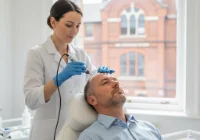
What happens before, during and after your PRP appointment
-
Consultation and assessment
Your practitioner reviews your medical history, examines the treatment area and explains what PRP can and cannot achieve. This helps set realistic expectations before treatment begins. -
The blood draw
A small sample of blood is taken from your arm, similar in volume to a routine test at your GP. Many people are surprised by how quick and simple this part feels. -
Preparing the PRP
The sample is placed in a centrifuge that separates the golden platelet-rich plasma from other blood components. This process takes just a few minutes and is typically completed while you sit comfortably in the treatment room. -
Numbing and preparation
For facial or scalp treatment, a numbing cream or cooling method is applied. People often describe this moment as the point when they can relax, listening to the faint hum of the centrifuge in the background, a sound that feels oddly reassuring once you know what it is doing. -
PRP application
For facial rejuvenation, PRP is injected with fine needles or combined with microneedling to deliver growth factors across the skin.
For hair loss, a series of small injections is applied to targeted scalp areas.
For joints, PRP is injected into the affected area by a trained clinician, sometimes with the aid of ultrasound guidance for enhanced precision. -
Immediate aftercare
Mild redness, warmth or tightness is normal. Most people walk out of the clinic and continue their day, sometimes with a hat tucked in their bag for scalp treatments if they prefer extra discretion.
What recovery looks like in everyday life
-
Most people return to work after treatment, especially for facial PRP, where redness settles relatively quickly.
-
Scalp treatments may cause mild tenderness, similar to the sensation experienced after wearing a ponytail too tightly.
-
Under-eye PRP may create light puffiness for a day or two.
-
You will be advised to avoid saunas, intense exercise and alcohol for 24 hours to support ideal results.
-
Makeup should be avoided for 24 hours after facial PRP to protect the treated skin.
A PRP session in Stoke-on-Trent is a straightforward process with minimal downtime. From the quick blood draw to the subtle warmth afterwards, most patients find that the experience is easier and more comfortable than they anticipated.
PRP Treatment Results: Timeline And Expectations
Results that build gradually, not overnight
PRP treatment in Stoke-on-Trent is designed to encourage your skin, hair or joints to repair and strengthen over time. Because the treatment works in harmony with your natural biology, improvements tend to appear gradually yet meaningfully.

How long PRP takes to show results – A realistic timeline
-
Early changes (2 to 4 weeks)
-
Many people notice small shifts such as reduced hair shedding, a fresher skin tone or a slight softening of texture.
-
These early signs are subtle, similar to the way your face looks after a good week of rest rather than a dramatic cosmetic change.
-
-
Visible improvement phase (6 to 12 weeks)
-
Collagen activity increases, which may help smooth fine lines and improve skin firmness.
-
Hair growth cycles respond more slowly than skin, so improvements in density or strength often become noticeable around the 3-month mark.
-
For joint PRP, discomfort may begin to reduce gradually as inflammation settles.
-
-
Full results (3 to 6 months)
-
This is the point where most people in Stoke-on-Trent see the clearest benefits of PRP.
-
Skin often appears more supple, hair feels fuller, and joints may feel easier during daily activities.
-
These results are not guaranteed, but they reflect the natural pace at which your tissues respond to platelet activity.
-
-
Maintenance phase (every 6 to 12 months)
-
To maintain progress, many patients opt for top-up sessions once or twice a year.
-
Maintenance varies depending on age, lifestyle and whether PRP is combined with other treatments.
-
Why PRP results vary from person to person
-
PRP relies on your body's natural healing processes, so age, general health and hormonal factors can influence outcomes.
-
Hair follicles respond best when they are still active, which is why early intervention often produces stronger results.
-
Skin that has been heavily sun-damaged or has deep structural ageing may need additional treatments alongside PRP.
-
Lifestyle choices such as smoking, sleep patterns, nutrition and stress levels can affect how the body responds.
-
This is why clinicians in Stoke-on-Trent focus on personalised plans rather than a one-size-fits-all approach.
How to support the best possible outcome
-
Staying hydrated in the days leading up to and following treatment can help maintain your plasma quality.
-
Avoiding anti-inflammatory medication (unless prescribed) helps PRP trigger the normal healing cascade.
-
Combining PRP with microneedling or topical hair treatments can amplify results.
-
A consistent routine tends to produce better outcomes than sporadic treatment.
-
Even minor adjustments, such as improving sleep quality or reducing alcohol intake, can help the body respond more effectively.
PRP treatment in Stoke-on-Trent rewards patience. Results unfold gradually, aligning with the way your body heals and renews itself. For many people, this slow-build approach feels more natural and sustainable than immediate cosmetic interventions.
PRP Treatment Costs In Stoke-on-Trent
Clear pricing helps you plan with confidence
PRP treatment costs in Stoke-on-Trent vary depending on the area being treated, the clinic's expertise and the number of sessions required. Understanding the typical price ranges can help you make an informed, realistic decision.
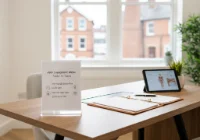
What influences the cost of PRP treatment locally
-
Treatment area
Facial PRP is usually less intensive than scalp or joint injections, so prices reflect the time and technique involved. -
Number of sessions
Most people require a course of 3 to 4 treatments for skin or hair, which affects the overall investment. -
Clinic expertise
Medical-led clinics or those utilising advanced PRP systems may charge slightly higher fees, reflecting the cost of training, equipment, and safety standards. -
Treatment complexity
Hair loss and joint PRP often involve targeted injections over a wider area, leading to longer appointments and higher costs. -
Combination treatments
Some people choose to combine PRP with microneedling or topical hair therapies, which can change the total cost of a full plan.
Typical PRP prices in Stoke-on-Trent
-
PRP facial or under-eye treatment
Usually between £120 and £250 per session. This suits individuals seeking support for early signs of ageing, uneven texture, or dullness. -
PRP for hair loss
Typically, the cost ranges between £220 and £400 per session, depending on the clinic. Multi-session packages are standard because hair responds best to consistent treatment. -
PRP for joint pain or tendon concerns
Typically £250 to £600 per session, often performed within specialist musculoskeletal clinics. -
Maintenance pricing
Follow-up treatments, administered every 6 to 12 months, may be priced lower than the initial course, depending on the clinic.
What value looks like beyond the price tag
-
A medically trained practitioner offers greater safety and precision, particularly for PRP treatments targeting the scalp and joints.
-
Clinics using high-quality PRP systems may produce more consistent platelet concentration.
-
Transparent consultations, realistic expectations and aftercare support are strong indicators of value.
-
The cheapest option is not always the safest or most effective when it comes to blood-derived treatments.
-
Many patients find that better support, more explicit guidance and safer protocols justify a slightly higher investment.
PRP treatment in Stoke-on-Trent offers flexible pricing that adapts to different goals, whether you want to improve skin tone, support hair density, or address joint discomfort. Understanding the ranges helps you plan, but your final cost will depend on your personalised treatment plan.
PRP Treatment Risks And Safety Information
Understanding safety helps you make confident decisions
PRP treatment in Stoke-on-Trent is generally considered low risk because it uses your own blood, but no medical or aesthetic procedure is entirely without potential side effects. Knowing what to expect helps you feel prepared rather than uncertain.

Common short-term effects – What most people experience
-
Mild redness or swelling
Particularly after facial PRP or microneedling, the swelling usually settles within 24 to 48 hours. -
Tenderness in the scalp
Hair PRP often leaves the scalp feeling slightly sore, similar to the feeling after undoing a tight hairstyle. -
Warmth or tightness
Many people describe a warm, stretched sensation in the treated area as the platelets begin to settle. -
Small bruises
Especially around delicate areas, such as the under-eyes, though these typically fade within a few days. -
Temporary puffiness
Under-eye PRP can result in a brief period of mild swelling as the skin adjusts to the treatment.
Less common but important risks – What you should be aware of
-
Infection at the injection site
Risk is low in medically led clinics, but strict hygiene protocols are essential. -
Prolonged inflammation
Rarely, swelling or redness may persist for more than 48 hours and should be reviewed by a clinician. -
Vascular or nerve irritation
Very uncommon, but possible if injections are placed too deeply or too superficially, emphasising the importance of trained practitioners. -
Pigmentation changes
Uncommon but possible after facial PRP, especially in individuals prone to hyperpigmentation. -
Unsuitable response
Some individuals do not respond strongly to PRP due to biological factors such as platelet quality or underlying health conditions.
Why choosing a qualified PRP practitioner in Stoke-on-Trent matters
-
Handling blood products requires clinical training to minimise contamination or processing errors.
-
Correct injection depth and area selection can help reduce risks in sensitive regions, such as the under-eye area or scalp.
-
Clinically trained providers can recognise contraindications, follow sterile technique and manage complications if needed.
-
Medical oversight ensures a balanced, ethical discussion around results rather than unrealistic promises.
-
A proper consultation enables your practitioner to identify factors such as medications, health conditions, or lifestyle aspects that may influence your risk.
Safety tips for patients – How to protect your results
-
Avoid anti-inflammatory medication unless medically required, as it may interfere with the healing cascade PRP relies on.
-
Follow aftercare instructions carefully, including avoiding hot environments, alcohol and intense exercise for 24 hours.
-
Keep the treated area clean and avoid touching it unnecessarily.
-
Attend follow-up appointments as recommended by your clinic.
-
Contact your practitioner promptly if swelling worsens, if you develop feverish symptoms or if you are concerned about any changes.
PRP treatment in Stoke-on-Trent remains a low-risk option when performed by qualified, medically trained practitioners. Understanding common reactions, rare complications and how to support safe healing helps you approach the treatment with confidence and realistic expectations.
Clinic Owners - Unlock The Power Of PRP
Join the growing number of aesthetic professionals offering Platelet-Rich Plasma treatments that deliver natural, visible results and long-term patient satisfaction.

Platelet Rich Plasma (PRP) has become one of the most in-demand treatments in modern aesthetics, valued for its ability to rejuvenate skin, stimulate hair growth, and accelerate healing using the body’s own natural processes. As patient demand for regenerative treatments continues to rise, now is the perfect time to integrate PRP into your clinic’s portfolio.
Whether you’re looking to attract new clients, enhance treatment outcomes, or expand your regenerative medicine offering, PRP provides a versatile and profitable solution. With minimal downtime, high safety margins, and growing public awareness, it’s a treatment that delivers results and builds trust.
Find out how to introduce PRP to your clinic today.
Want to add your clinic to our PRP Search?
Join ConsultingRoom.com today and unlock the UK's most trusted aesthetics network for clinics like yours. For just £20 per month (inc VAT), you'll get:
- A professional clinic listing built for you
- Full access to 50+ business and marketing tools
- Instant credibility with patients searching for safe, reputable clinics
Start My Membership for £20/month
Simply click here to complete the form on our registration page, and we will have you up and running quickly.
No contracts, no tie-ins - cancel anytime.
One new client every 3 years covers the cost.
PRP Quick FAQs
Clear, concise answers to common queries
A simple, no-fluff roundup of frequent PRP questions to help you get the facts fast.

Can PRP be used preventatively, before visible signs of ageing or hair loss?
Yes. Many people use PRP proactively in their late 20s or 30s to slow collagen loss and keep hair follicles active. Early intervention often leads to better, longer-lasting results.
How does PRP differ from stem cell therapy?
PRP uses your platelets to release growth factors that stimulate repair. Stem cell therapy involves harvesting and reintroducing stem cells, which is more complex, costly, and not widely available in aesthetic clinics.
Is PRP suitable for darker skin tones?
Yes. PRP is safe across all Fitzpatrick skin types because it doesn’t rely on heat or light energy, which can trigger hyperpigmentation. It’s often chosen as a safer alternative to lasers for darker skin.
Can PRP help after pregnancy?
Postpartum hair shedding and changes in skin texture are common. PRP can safely support scalp recovery and skin rejuvenation once you’re no longer breastfeeding, as most practitioners avoid treatment during that period.
What’s the difference between single-spin and double-spin PRP?
Single-spin centrifugation produces a moderate concentration of platelets. Double-spin methods refine this further, often leading to higher platelet counts. The technique used can influence results, so it’s worth asking your practitioner.
Does hydration really affect PRP results?
Yes. Being well-hydrated improves the quality of your blood sample, which can increase platelet concentration. Practitioners often recommend drinking 1.5–2 litres of water in the days before treatment.
Can PRP be combined with Botox or fillers?
Yes. Many people combine PRP with Botox for movement lines or fillers for lost volume. PRP improves skin quality, while injectables address shape and wrinkles, creating a more complete result.
How soon can I exercise after PRP?
It’s best to avoid strenuous exercise, saunas, and hot yoga for 24–48 hours after treatment. Heat and sweat can increase swelling and irritation at the injection sites.
Does PRP work for under-eye dark circles?
Yes, in some cases. By stimulating collagen and improving blood flow, PRP can reduce hollowness and pigmentation under the eyes. Results vary depending on whether circles are caused by skin thinning, vessels, or pigmentation.
Is there a “best age” to start PRP?
There’s no strict age, but most people start in their 30s or 40s, when early ageing or mild hair thinning appears. Younger patients may use it preventatively, while older patients often combine PRP with other treatments.
Can PRP be done if I’ve had filler or laser recently?
Yes, but timing matters. PRP is often used after laser or microneedling to speed healing. If you’ve had fillers, most practitioners recommend spacing treatments at least 2–4 weeks apart.
Is PRP available on the NHS?
In rare cases, yes—mainly for joint conditions or wound healing. It isn’t offered for cosmetic concerns like hair loss or skin rejuvenation, which remain private treatmen
How long do PRP appointments usually take?
A typical session lasts 45–90 minutes, including consultation, blood draw, and preparation. The injection portion is relatively quick, usually 15–30 minutes.
What lifestyle habits affect PRP results most?
Smoking, heavy alcohol use, poor sleep, and a nutrient-poor diet can all reduce PRP’s effectiveness. A healthy lifestyle supports platelet function and helps maintain results longer.
Does PRP hair treatment hurt?
PRP involves multiple small injections into the scalp, which can cause mild discomfort. Clinics often apply numbing cream or use cooling techniques to minimise pain during the session.
How many PRP treatments will I need?
Most patients start with three to four initial treatments, about four to six weeks apart. Maintenance sessions are usually recommended every six to twelve months, depending on your response and goals.
When will I start to see results of PRP?
Many patients begin to notice a reduction in shedding within the first month. Visible hair thickness and density improvements typically appear between three and six months post-treatment.
Stay Informed with the Latest Aesthetic News & Offers
Join our free newsletter to receive updates on the latest treatments, safety guidance, and exclusive clinic offers near you.
No spam, just expert insights and trusted advice from the UK’s leading aesthetics directory.

